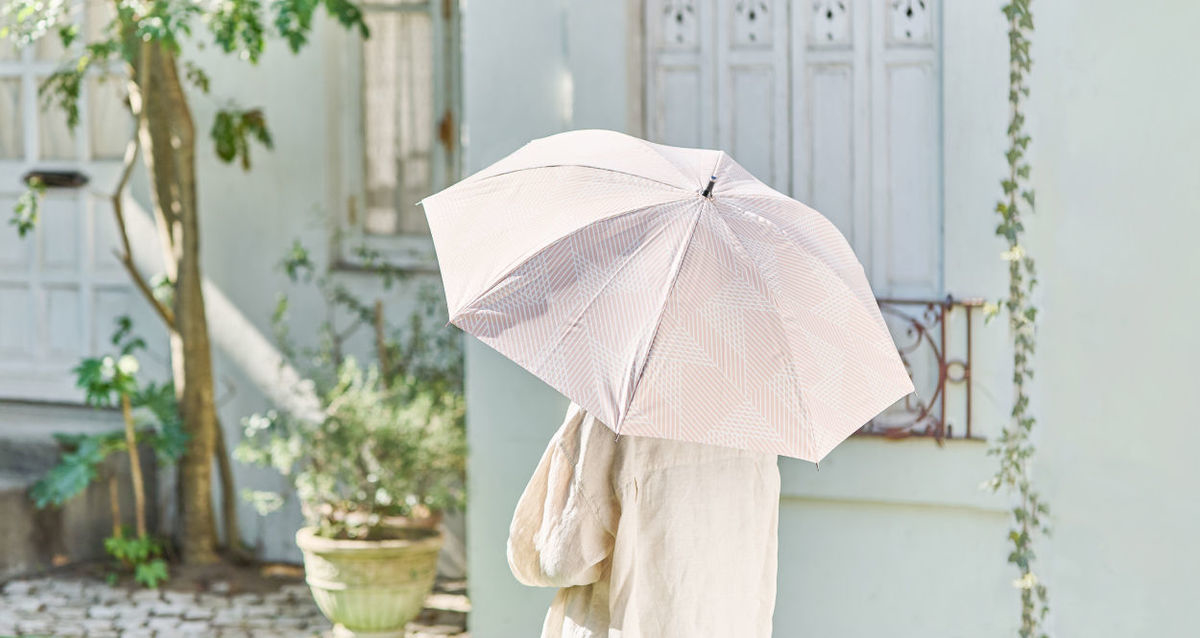
HANDS buyers, who know parasols inside out, recommend popular parasols! Parasols differ not only in shape, such as 'long' and 'foldable', but also in functionality, such as 'fully shaded' and 'lightweight', making it difficult to find one that suits you.
This article therefore explains the advantages and disadvantages of each, the popular 'full shading' and how to choose a parasol. We also briefly introduce daily care, so please take a look at this article as basic knowledge about parasols.
8 Key Points on How to Choose A Parasol

There is a wide range of parasols available. The following eight points should be considered when choosing a parasol to suit your preferences and usage scenario. Each of these points is explained below.
Eight things to be aware of when choosing a parasol
1. Type of parasol (long or foldable)
2. UV shielding (UV cut), light shielding and heat shielding effect of parasols
3. Parasol coatings and colours
4. Parasol open/close function
5. Size of parasol
6. Lightness of parasol
7. Parasol design
8. Water repellency and wind resistance of parasols (All Weather)
1. Type of parasol (long or foldable)
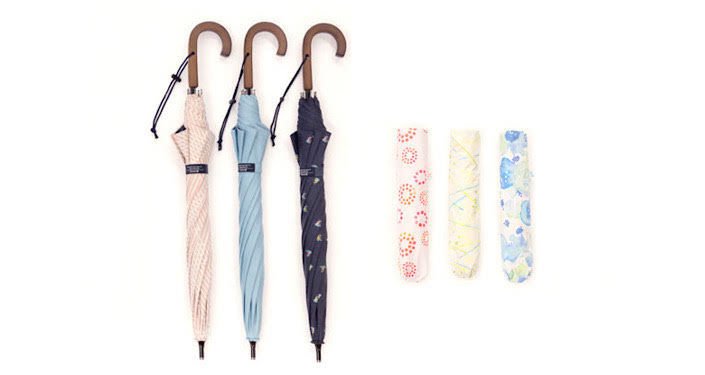
There are two main types of parasols: long and foldable. Check the advantages and disadvantages of each.
Long Type
Many long types are large when open and are popular with people who want to protect their upper body from UV rays. Even if you use it frequently, it is better to choose a long umbrella that requires less effort to open and close. Many of them can also be used in rainy weather, so long types are convenient on days when there is a high chance of precipitation. On the other hand, these have the disadvantage of being larger and heavier than foldable types.
Foldable Type
Foldable types fold up small and are therefore highly portable. A major advantage is that it can be stored in a bag or pocket, reducing the amount of baggage you need to carry. For those who only use a parasol when they are out and about and are particularly concerned about UV rays, the foldable type is ideal. These are convenient to carry, but are often relatively less strong than long types.
2. UV shielding (UV cut), light shielding and heat shielding effect of parasols
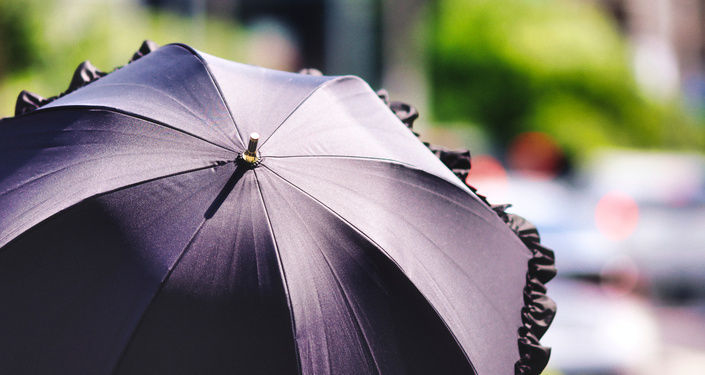
When selecting a parasol, the main concern is still how much sunlight and UV radiation it can avoid. The following is a list of terms often used as criteria for choosing a parasol. It is recommended to choose a parasol with these terms in mind.
Terms commonly used as criteria for selecting a parasol
- Light-shielding ratio
- Full-shading
- Ultraviolet shielding rate (UV cut rate)
- UPF (UV protection factor)
- Heat shielding effect
Light-shielding ratio
This is a value indicating the degree to which light is blocked, as measured by the IS standard test method. Shading rates are graded. When a parasol is used to protect against heat, the higher the shading ratio, the cooler it is likely to feel.
<Numeric Example>
Grade 1 shading: light shading rate of 99.99% or more*
Grade 2 shading: light shading rate of at least 99.80%"
*: Some manufacturers do not use the expression 'Glade 1 shading' but claim 'full shading' or '100% shading'.
What is full shading?
The labels 'full shading' or '100% shading' are often seen in recent years. In fact, these are measured values in the state of the fabric. In addition, regarding the shading rate of parasols, companies that are members of the Japan Umbrella Promotion Council used to only be able to claim '99.99% or more' even if they had 100% shading performance, but the rules have been changed and from 2025 even member companies will be able to state '100%'.
However, even when fabrics with 'full shading' or '100% shading' performance are used, it is difficult to block out light and ultraviolet rays completely, due to seams and other defects that occur when sewing the fabric and because of the reflection of light from the ground.
In addition, different manufacturers have different standards, which can lead to differences in the labeling. Even if a product is labelled as 'fully shaded' or '100% shading', this does not mean that the parasol itself is 100% shaded, so attention should be paid to.
Ultraviolet shielding rate (UV cut rate)
A numerical value indicating how much ultraviolet rays are blocked, measured according to the JIS standard method. When using a parasol as UV protection, choose one with a high value. For example, "99.99% and above", "90% and above"
UPF (UV Protection Factor)
Measured using the Australian and New Zealand standard test method. This value indicates how many times longer it takes for UV rays to reach the same level of damage as if the skin had been exposed to UV rays on bare skin. Generally stated together with the ultraviolet shielding rate (UV cut rate).
<Numeric Example>
UPF 30 - 30 times
UPF 50+ - higher 55 times
The figures introduced are shown on the parasol's tag, but they only show the performance of the fabric and do not consider leakage from the seams or illumination from the ground or other sources. Please note that even if the parasol is labelled as 'fully shaded' or '100% shading', its effectiveness as a parasol will vary depending on the temperature and weather conditions.
Heat shielding effect
Due to the complexity of testing methods for heat shielding effectiveness, there are few numerical heat shielding claims. However, many umbrella manufacturers display a 'heat-blocking effect' label on those that have passed heat-blocking tests based on JIS standard tests.
3. Parasol coating and colours
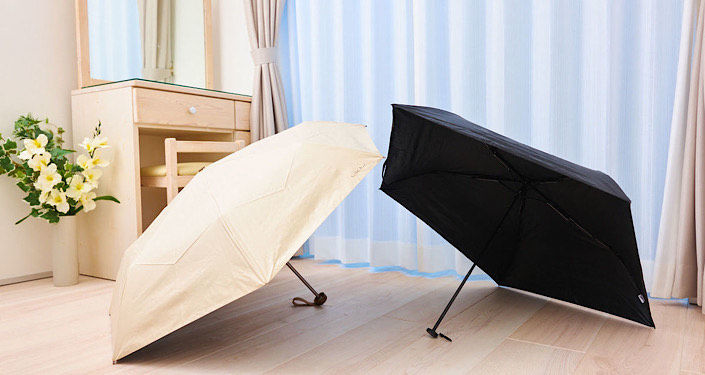
In addition to parasols with a UV-blocking treatment on the fabric, there are also types of parasols with a coating on the backside of the umbrella to match. The coating on the back side allows more UV rays and sunlight to be blocked, resulting in an umbrella with a higher UV shielding or light blocking rate. If you want to make sure you have good UV protection, make sure to check whether the lining is coated or not.
The colour of parasols is often discussed, but only if there is no coating treatment, it is advisable to choose a black parasol whose surface easily absorbs UV radiation.
On the other hand, if the parasol has a coated lining, the colour of the surface of the umbrella does not actually have much effect on the UV protection or light shielding.
4. Parasol open/close function
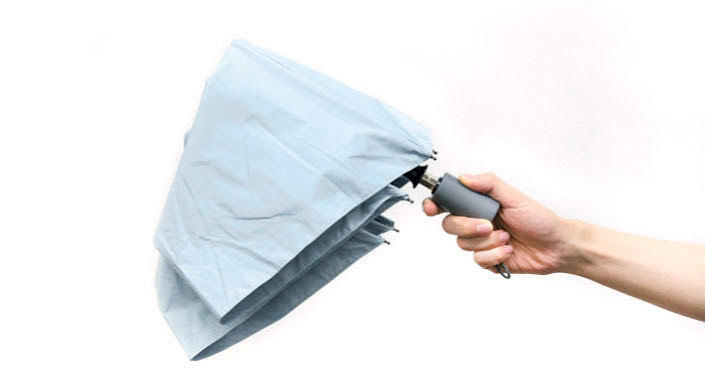
A major factor in the ease of use of a parasol is its functionality when opening and closing. Two typical functions are as follows
Easy open/close
Easy open/close is one of the features provided in foldable umbrellas/parasols. It refers to a structure that allows the umbrella/parasols to be folded and opened with a single touch, without having to fold the bones one by one by hand.
Automatic open/close
Automatic open/close is a very convenient feature that allows the umbrella/parasol to open and close at the touch of a button. Some foldable umbrellas/parasols with automatic open/close include a safety type (or adjustable type), which has an additional spring-loaded feature that prevents the handle from accidentally returning when the outstretched handle is folded.
5. Size of parasol
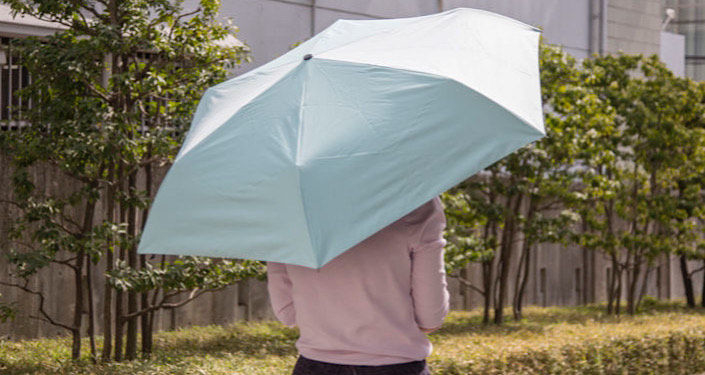
Size is another important factor in choosing a parasol. The size of the parasol affects the effectiveness of the parasol and its use. Umbrella size is indicated by the length of the parent bone, which runs from the centre of the umbrella to the tip of the fabric. Click here for a guide to choosing the size of parasol.
Ribs 50cm - for women
Ribs 55cm - Unisex
Ribs 60cm - for men
Even with the same size of the ribs, the number of ribs and the shape of the parasol will vary depending on the size when you hold it up. The larger the size of the rib, the easier it is to protect the upper part of the body from UV rays and sunlight. Larger sizes are recommended for people who want to hide their face and neck as much as possible from the sun and UV rays, for people who carry a lot of luggage, and for people who carry a backpack.
6. Lightness of parasol
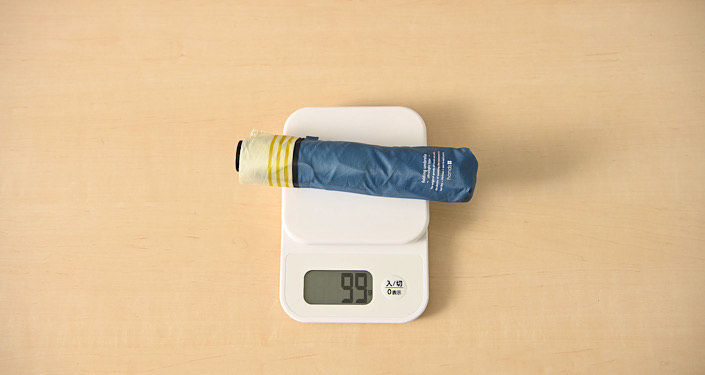
The lightness of a parasol is generally proportional to its size. In addition to size, it also depends on the construction of the umbrella's framework. The more ribs there are, the greater the weight, but the greater the strength against wind. Umbrellas with functions such as automatic opening and closing or wind resistance tend to be slightly heavier.
If you are looking for a lighter parasol, a parasol weighing less than 250 g is a good choice. The weight is less of an issue when carried in a bag and is useful when you want to go light or when travelling.
7. Parasol design
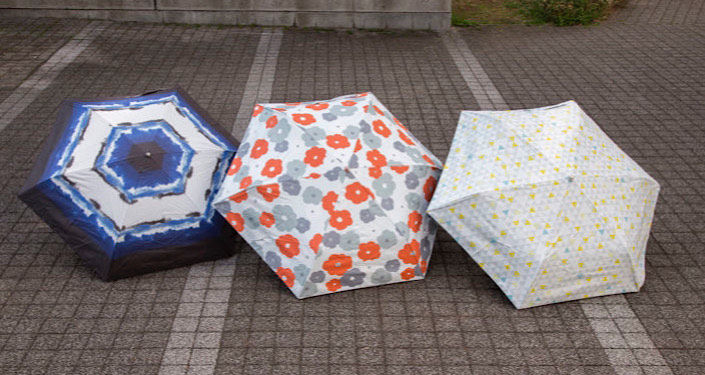
As it is an item that is carried frequently, the design is also an item to be checked. In recent years, parasols have come in a wide variety of designs. Choose your favourite design, from feminine patterns to chic ones that go well with suits.
As well as the pattern and colour, the material used also dramatically changes the atmosphere of the umbrella. In addition to common polyester, there are also those made of cotton and other materials. If you want to take detailed design into account, you may want to consider the material when choosing a parasol.
8. Water repellency and wind resistance of parasol (All weather)

The parasols currently available at HANDS can also be used as rain umbrellas as 'all weather umbrellas'. Water repellency and wind resistance are two things to check for those who want to use parasols on a daily basis, including on rainy days.
Water repellency
All weather umbrellas, which can be used as both a parasol and a rain umbrella, have a water-repellent finish on the surface of the fabric. High water repellency means that water droplets can be removed by simply shaking it off before folding it, reducing stress when storing it.
However, friction during folding and oil and grease on the hands can reduce water repellency. If you feel that the water repellency has decreased, it is recommended to use a waterproofing spray that can be used on umbrellas.
Wind resistance
In general, umbrellas with more ribs are considered to be more wind-resistant. Today, due to the development of technology, an increasing number of umbrellas have a structure that allows the umbrella to be turned upside down in the wind, but can be restored to its original position when closed. Another key to choosing a wind-resistant umbrella is to select an umbrella with a high-strength fibreglass or carbon rib. The high strength of the material makes it difficult to break even in strong winds.
Buyer's choice! Popular parasols we recommend
HANDS buyers have selected a selection of recommended parasols by type. All of them can be used in the rain and have a coated lining, so the basic functions are covered! Some are also unisex, so both men and women can use them as a reference when choosing a parasol.
*The UV shielding rate, UV cut rate and light shielding rate are measured values in the state of the fabric and do not represent the performance of the umbrella itself.
You will want to carry it with you! Lightweight & slim types
Magical lightness [estaa Magicaltech Protection Super Light]
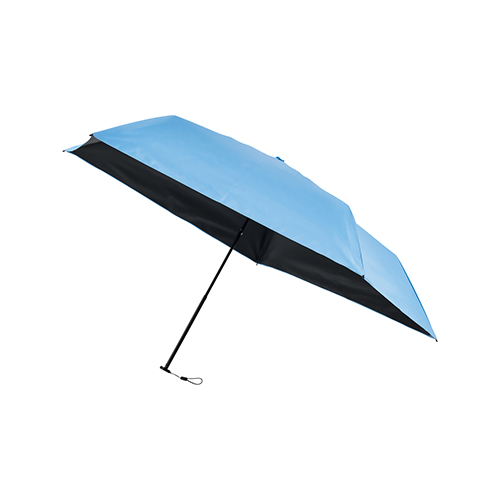
estaa, Magicaltech Protection Super Light 50cm, Pale Sky
|
UV shielding and light shielding rate |
UV Shielding Rate: 100% Light Shielding Rate: above 100% Heat shielding effect: available |
|
Function |
Highest grade 5 water repellent, water pressure resistance 10,000 mm min Uses uniquely developed ultra-lightweight carbon bones |
| Materials | Polyester 100% |
| Weight | Approx. 97g (Black colour is 85g) |
| Length of Ribs | 50cm |
"Magical Tech Protection" is a series of lightweight parasols from estaa, which means "protection" in Finnish, combining magical lightness and functionality that makes you feel weightless. The umbrella has water-repellent properties to protect against sudden rainfall, and uses an independently developed ultra-lightweight carbon bone to achieve a magical lightness.
Stylish square parasol [estaa, masu]
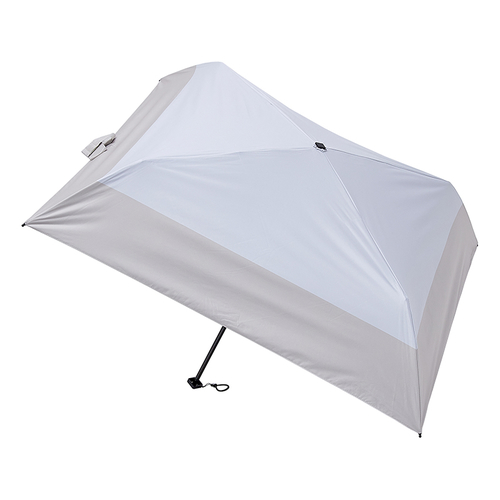
estaa, masu light-weight square parasol 50cm, border/off white
| UV shielding and light shielding rate | UV Shielding Rate: above 99% Light Shielding Rate: above 99.99% Heat shielding effect: available |
| Function | Water-repellent finish |
| Materials | Polyester 100% |
| Weight | Approx. 120g |
| Length of Ribs | 50cm |
"masu" is a square umbrella reminiscent of a square wooden cup, which is a departure from conventional umbrellas. Compact and lightweight like a fan, it is ideal as a regular umbrella to be carried 365 days and will be a reassuring ally during hot summer trips.
Parasols with useful functions
Magical parasol that folds up in a jiffy [estaa, kowaza]
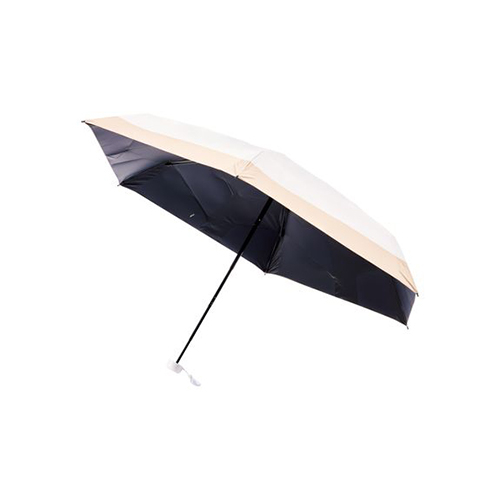
estaa, kowaza easy-to-fold parasol 50cm, border/white
| UV shielding and light shielding rate | UV Shielding Rate: above 100% Light Shielding Rate: 100% Heat shielding effect: available |
| Function | Easy open/close. Highest grade 5 water repellent, waterproof to a minimum of 10,000 mm water pressure. |
| Materials | Polyester 100% |
| Weight | Approx. 248g |
| Length of Ribs | 50cm |
"kowaza" is a compact, all weather umbrella with form-stabilising technology. Thanks to a special sheet on the back, it folds up easily, so you can smoothly put away the umbrella when you are in a hurry on the go. This umbrella can be used from the rainy season to mid-summer, as it eliminates the hassle of using an umbrella.
Recommended parasols with particular designs
Ultra-lightweight parasol made of fully shaded fabric [ Masayuki Oki x Wpc. Air-Light Shading UMBRENYAN ]
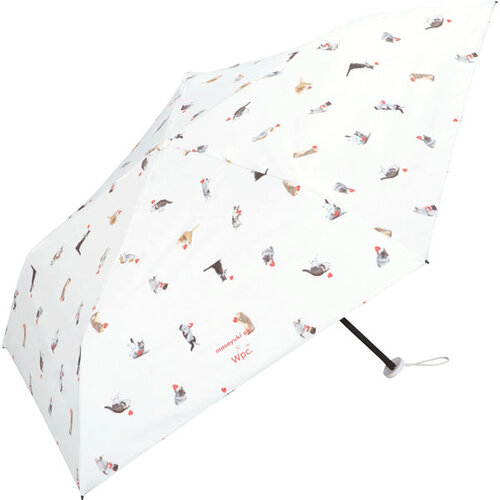
Masayuki Oki x Wpc. UMBRENYAN
| UV shielding and light shielding rate | UV Shielding Rate: 99.9% Light Shielding Rate: 100% Heat shielding effect: available |
|
Function |
Easy open/close |
| Materials | Polyester 100% |
| Weight | Approx. 125g |
| Length of Ribs | 50cm |
A lovely illustration of a cute cat collecting hearts and stars is featured on the [Masayuki Oki x Wpc. Air-light Shading UMBRENYAN]. Made from lightweight fabric, it is lightweight at approximately 125g and compact, making it easy to carry around. It can be opened and closed smoothly in one action without folding.
Cute to carry around [ Wpc. POCHETTE tiny ]
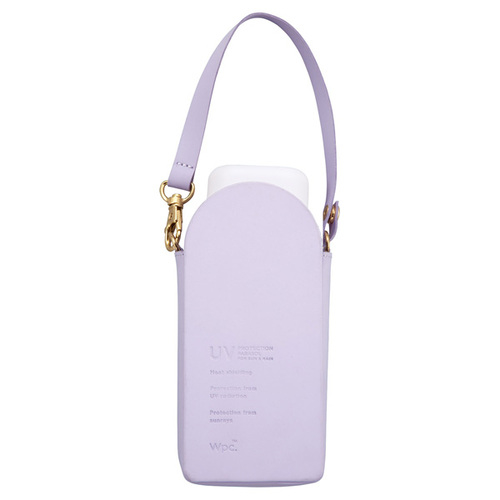
Wpc. Pochette tiny lavendar
| UV shielding and light shielding rate | UV Shielding Rate: 100% Light Shielding Rate: 100% Heat shielding effect: available |
| Function | manually opened |
| Materials | [cloth] Polyester 100% [Case] PU Synthetic Leather |
| Weight | Approx. 280g |
| Length of Ribs | 46cm |
[Pochette tiny] is a parasol with a convenient pochette case.
It can be worn over the shoulder like a smartphone and easily taken out at any time. It is a 2-way type with a shoulder strap as well as a short strap attached, so you can also attach it to your bag and carry it. As it can be worn and carried, it is safe to let your child wait for you.
Q&A on parasols

Points to Choose Your Parasol
There are eight points to be aware of: 1) the type of parasol (long or folding), 2) the parasol's UV shielding rate (UV cut), light shielding rate and heat shielding effect, 3) the parasol's coating finish and colour, 4) the parasol's opening and closing function, 5) the parasol's size, 6) the parasol's lightness, 7) the parasol's design and 8) the water and wind repellency of the parasol (all-weather umbrella).
What is the lifespan of a parasol?
The UV-blocking effect of parasols is semi-permanent for the lining-coated products described in this article, while parasols with UV-blocking treatment only last for two to three years. However, if they are incorrectly cared for and used, they can become fragile and their performance may not be satisfactory. With proper care and use, parasols should be used effectively for a long time.
How to make a parasol last longer?
There are three tips for prolonging the life of your parasol.
1) Shake the umbrella a few times to unwind it before opening it
2) Open and close automatic umbrellas by pointing straight up.
3) Fold it to avoid wrinkles.
Wrinkling of the surface or forcing the stuck fabrics to peel away from each other can cause damage to the fabric. It is best to fold the umbrella neatly to avoid wrinkles as much as possible and to shake the surface of the umbrella before opening it so that the fabrics are separated from each other.
Also, automatic umbrellas with convenient one-touch opening and closing should not be opened facing sideways or in any other non-vertical direction! Only part of the framework is stressed, making it more prone to breakage.
Choose by colour and functionality to find the perfect parasol for you
We have provided information on how to choose a parasol and selected items. The type and function of parasol to choose depends on the purpose and use. Please find the parasol that suits you best by referring to the points on how to choose and the parasols recommended by our buyers.
The parasols listed are available at HANDS shops. We also have a large selection of parasols that we have not been able to introduce this time, so please come and have a look.
And we also urge you to practice correct care and proper use of the product for a long life time.
* The delay in the date of arrival and changes in product specifications may occur due to factory production delays.
* Some shops may not carry the products listed. Please contact each shop for handling conditions.
* Products listed may be on order at some shops.
* Some specifications may be subject to change, and the number of products may be limited.
* Some of the photos shown include production items and images, and may not be available in the shops.